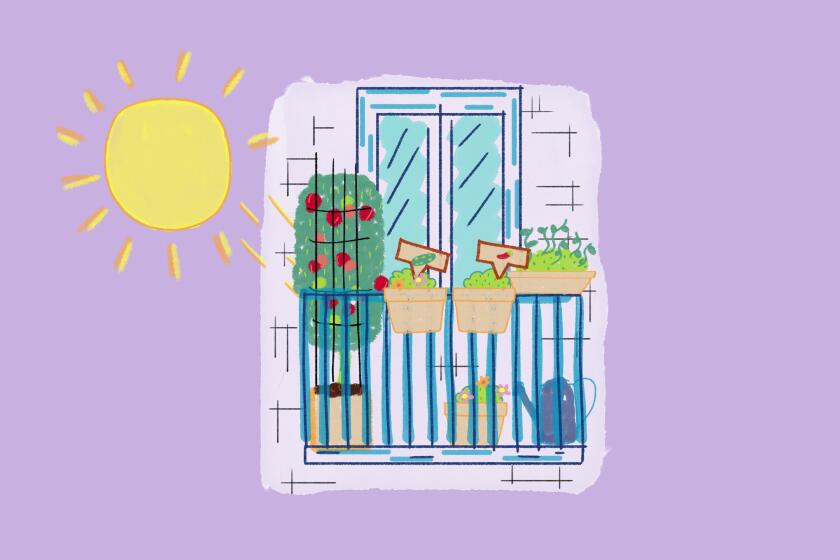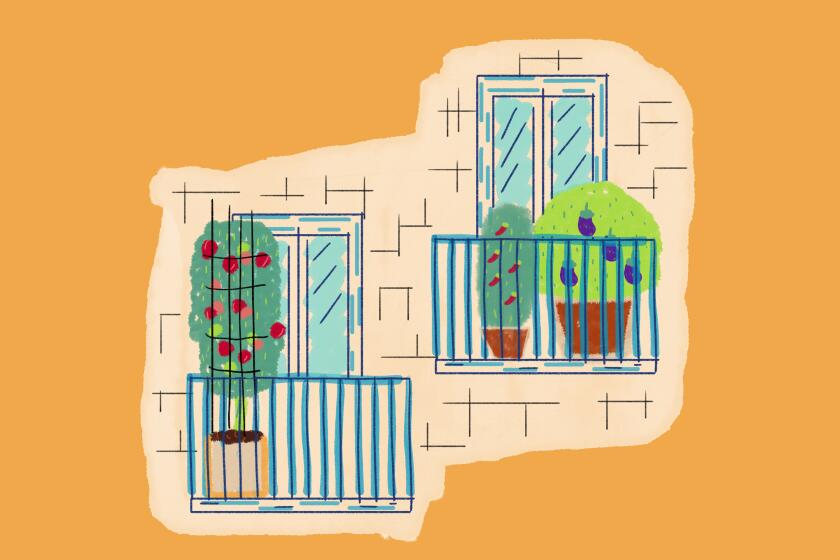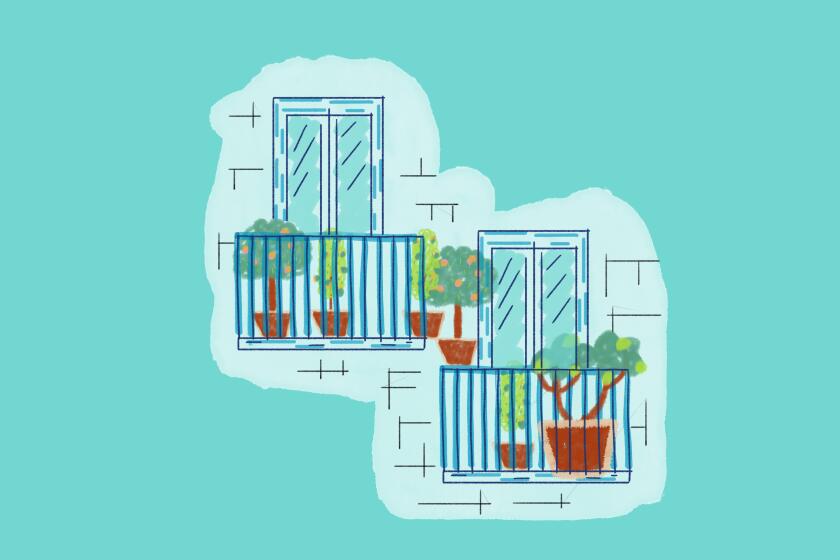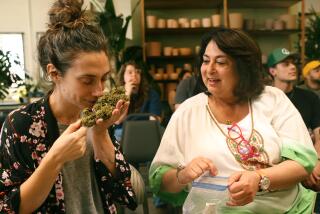5 tips for growing herbs on your balcony, or anywhere else that gets sun
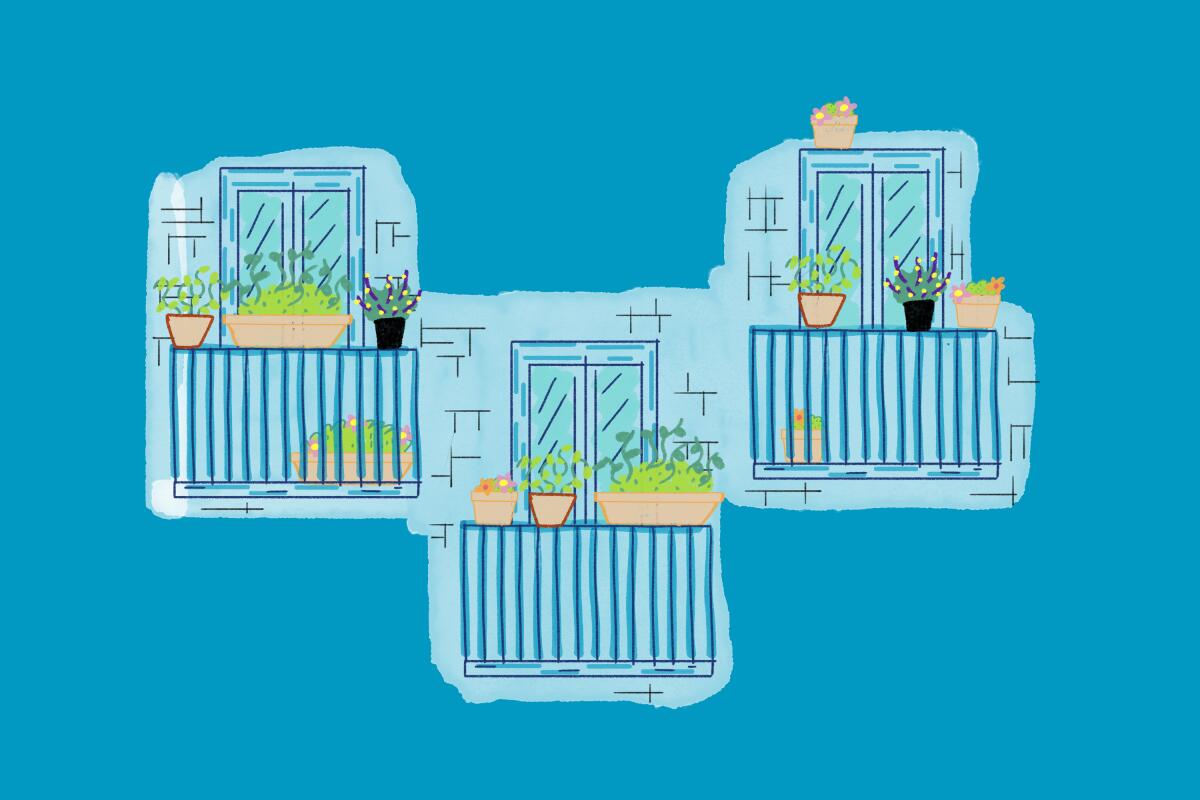
This story is part of a package about growing food in containers. Here’s all you need to know, plus learn how to successfully grow vegetables and fruits in a contained space.
When it comes to container farming, herbs feel like the easiest and most practical edible plants to grow, especially when you consider how much it costs to buy a tiny packet of fresh herbs at the grocery store (that seem to go bad almost immediately in the fridge).
So why do people so often bemoan their bad luck growing the herb plants that looked so lush when they bought them at their local market?
You can grow food in pots on your balcony -- or anyplace else you get some sun. But there are important things to know about container farming. Consider this your starter guide.
Lots of reasons, says Nicole Calhoun, owner of Artemisia Nursery in El Sereno.
The herbs you find in big-box stores and markets are often grown in controlled conditions with lots of fertilizer and little natural sun, Calhoun said, so they need to be “hardened off” before they go outside and face the elements. That means gradually introducing them to sunshine and/or cooler evening temperatures, and protecting them from harsh sun or chilly nights until they toughen up.
A safer choice is buying your herbs at nurseries, where they have been sitting outside for a while and are tough enough to face the elements.
Still, one of the biggest problems is that these herbs often come in small pots and never get transplanted.
“They need more room for the roots to grow healthy and strong,” Calhoun said. “Ideally they should be transplanted into 12-inch pots, but even an 8-inch or 10-inch container is better than those itty-bitty 4-inch pots.”
You don’t need land to grow food. In our container farming series, these experts explain how to successfully grow veggies, fruit and herbs in containers on your patio, porch or balcony.
Another big problem: People don’t know the difference between perennial herbs, like thyme, marjoram, rosemary and sage, and annuals like basil and parsley.
The perennials can last for years, Calhoun said, but annuals usually die after they bloom. You can prolong your basil’s life by regularly pinching back flowers as they form, she said, “but you’re just delaying the inevitable.”
One option is to stagger your basil purchases, buying pots at different times to keep your harvest going as long as possible, but remember that basil loves heat as much as it loves water, so don’t be surprised when it starts looking sickly in late fall or winter, when daytime temperatures regularly dip below 70.
African blue basil, a fragrant bee magnet, is a perennial that attracts pollinators to your garden with its bountiful blooms, so don’t keep its flowers trimmed. The more flowers the better here. The bees will find flowering herbs like African blue basil, even in an apartment balcony, Calhoun said, which is important if you want help pollinating your other veggies and fruits.
Here are five tips for growing herbs in containers:
You can grow fruit on your balcony or other small space, as long as you choose the right varieties, keep them well-watered and fed and plant them in the right containers, with plenty of sun.
1. Water, water, water
Container herbs need frequent watering, especially in the summer, because plants in pots dry out more quickly than in the ground. During really hot periods you may have to water your herbs once or twice a day, Calhoun said.
However, some woody perennial herbs are more drought tolerant once they’re established, and can actually die with too much water, said garden consultant and urban farmer Ken Sparks, aka Farmer Ken Official on Instagram. “After they’re established, in about one or two months, herbs like rosemary, lavender, garden sage, marjoram, oregano ,thyme and mint can actually go for a week or so between waterings, unless it’s really hot,” he said. “They’re just more forgiving if we forget.”
2. Compact works
Most herbs have relatively shallow roots, so you can put them in smaller containers, Calhoun said, as long as they have good drainage. This is why herbs are perfect for small-space gardening. Most herbs, including basil, thyme, parsley, chives, cilantro, marjoram and oregano will do well in 10-inch-deep pots, she said, as will shallow-rooted greens like arugula and spinach, French breakfast radishes and scallions.
Whether you’re looking for ocean views or desert landscapes or soaring mountain peaks, Los Angeles offers miles upon miles of strikingly different trails.
The one big exception? Mint. Mint has shallow roots but tends to take over wherever it’s planted, so keep it in a separate container.
3. Shop ‘sturdy’
When shopping for herbs, buy sturdy, dense plants at a local nursery, where they have already been outside for a while. Stay away from tall, lanky plants or herbs with yellowing leaves at the bottom. “Yellowing leaves are a sign they’ve been in their pots too long,” Calhoun said. “They’re running out of nutrients and starting to lose vigor. It’s best to look for smaller, denser plants rather than big plants that have overgrown their pots.”
4. Harvest ‘top down’
This will help your herbs stay healthy and full. “It’s the funniest thing to see people harvest the bottom leaves from herbs, because they end up with spindly, Dr. Seuss-type plants,” Calhoun said. “If you pinch off the growing tips from the top of the plant, or use scissors to take off the outermost part of the plant, it encourages dense, bushy growth, so you’ll have a nice, full plant. Most herbs are like hydras; if you cut off one head, two more will grow.”
5. Check in daily
If you make a habit of going out every morning to greet your herbs, you can spot problems before they get serious, like a basil that’s about to bolt (start flowering) or saucers full of water (a good way to drown your plants). Stick your index finger in the soil as far as possible, and if it comes out clean, that’s a sign the soil is dry and needs some water. Or use a moisture monitor (such as this one on Amazon) to indicate whether water is needed. Regular check-ins are one of the best ways to keep your plants healthy, Calhoun said: “And because herbs smell so great, you can start your day with a little aromatherapy.”
More to Read
Sign up for The Wild
We’ll help you find the best places to hike, bike and run, as well as the perfect silent spots for meditation and yoga.
You may occasionally receive promotional content from the Los Angeles Times.
